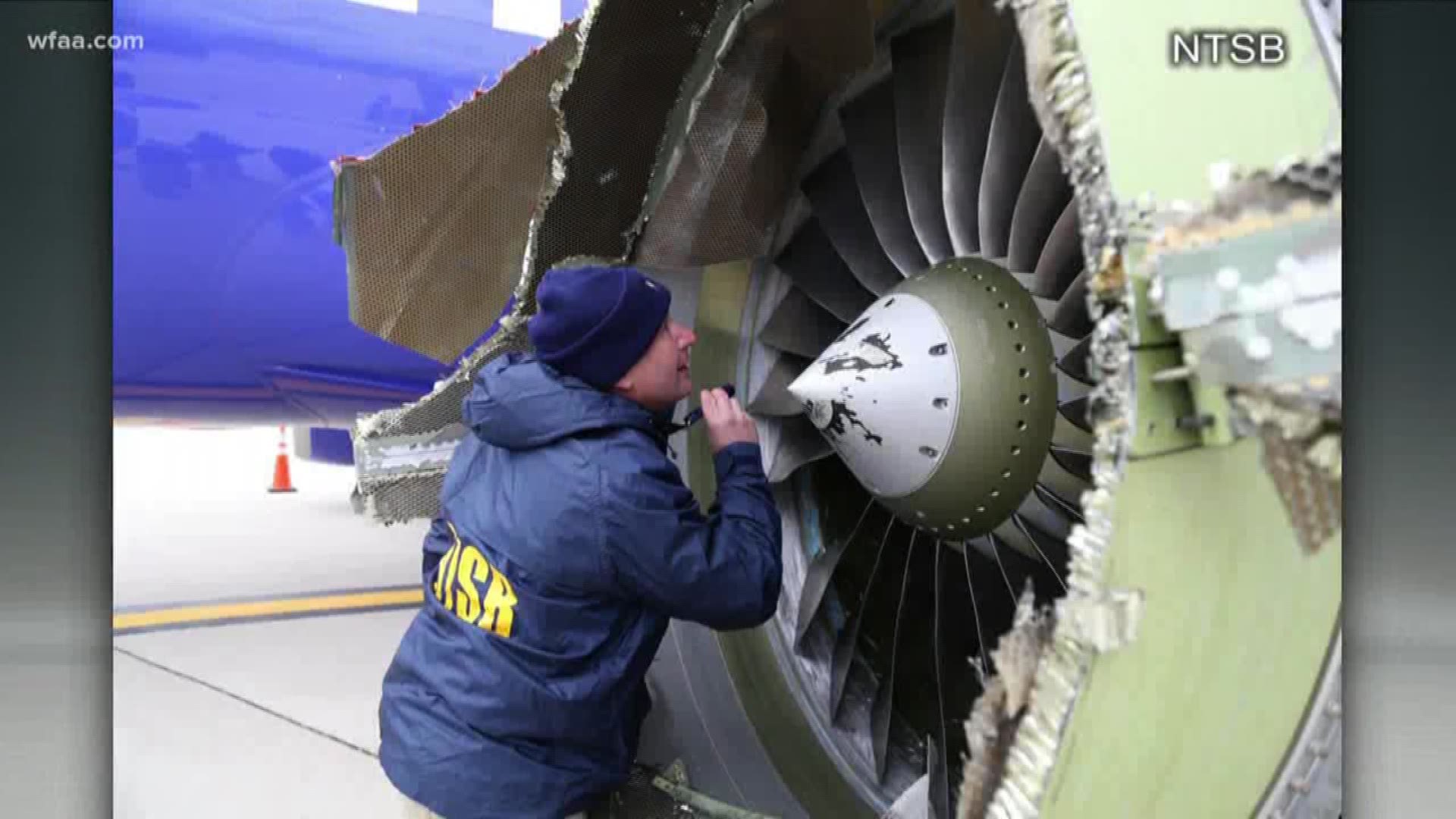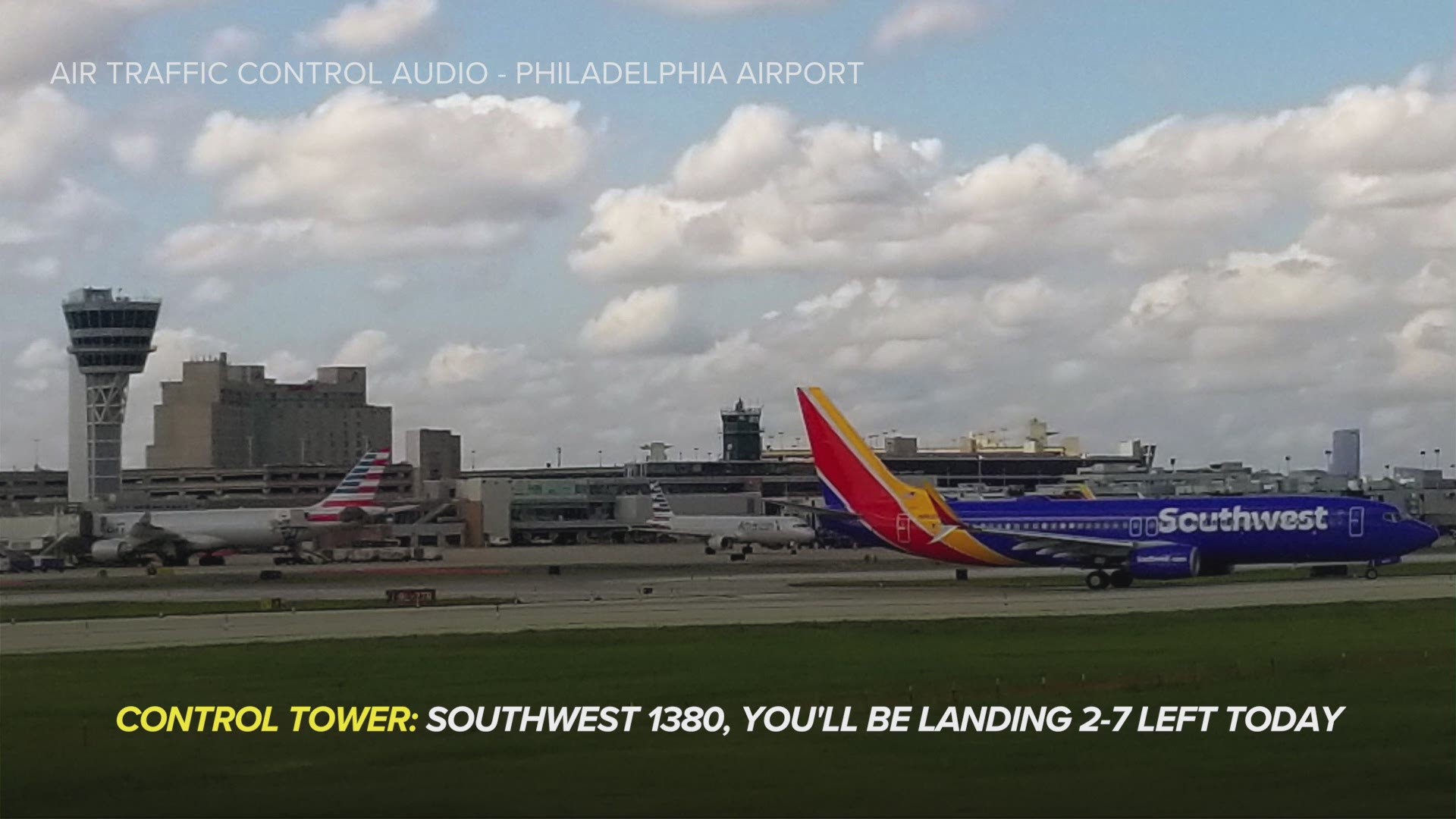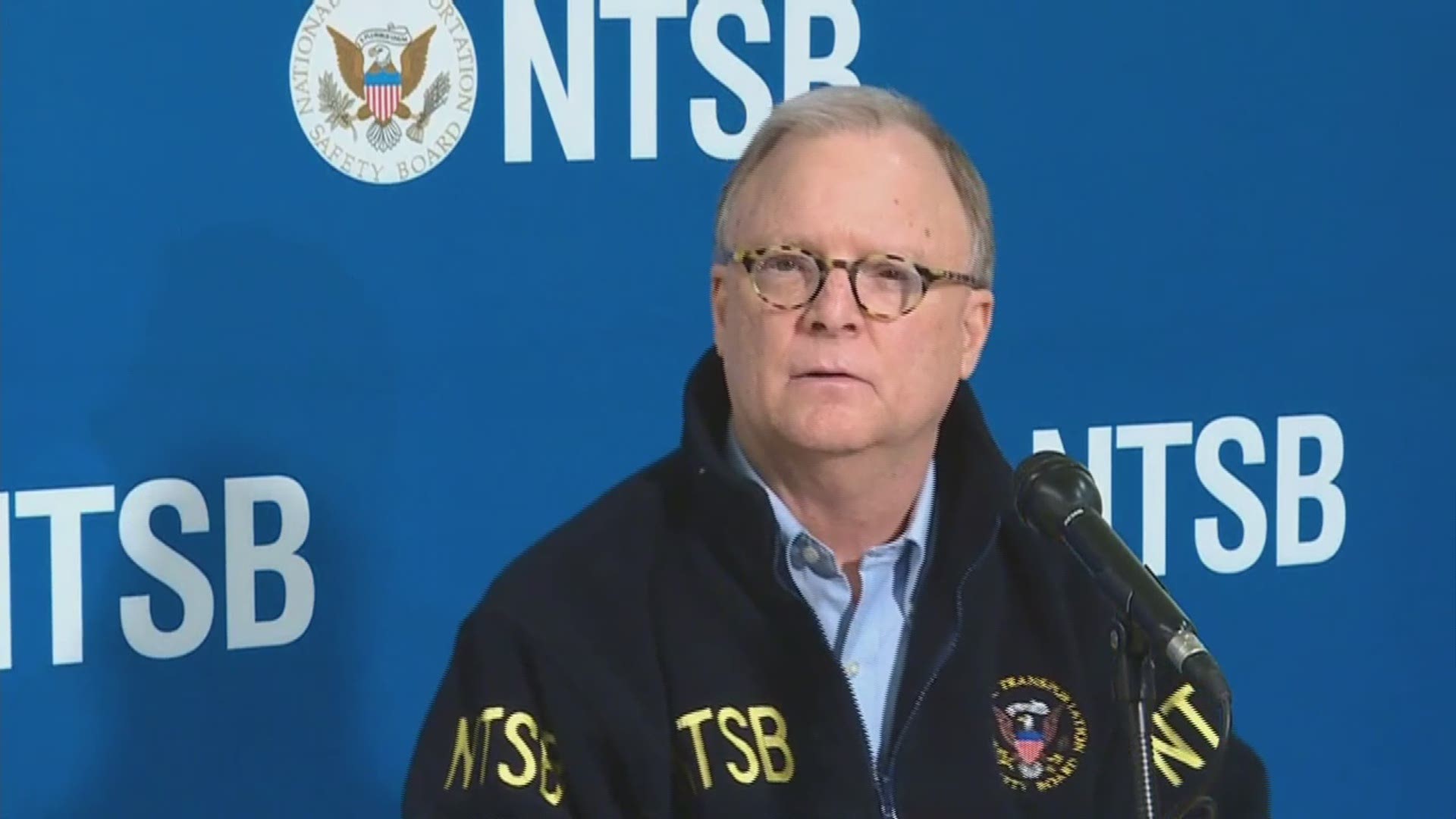Southwest Flight 1380 was a "routine" trip from New York City to Dallas on Tuesday morning – until about 20 minutes after takeoff, NTSB Chairman Robert Sumwalt said in an evening news conference
That's when one of the 737 jet's engines failed, leading to an emergency landing in Philadelphia and the death of a passenger, Jennifer Riordon, of Albuquerque, N.M.
Riordon was Southwest's first passenger fatality in the company's 51-year history.
After Sumwalt's briefing Tuesday night, here's the latest information we know about what went wrong:
Takeoff
The flight left LaGuardia Airport in New York City at 10:43 a.m., bound for Love Field in Dallas with 144 passengers and five crew members. The flight started off normal, Sumwalt said.
But just after 11 a.m., as the fight reached 32,500 feet, multiple alerts and warnings sounded off in the cockpit.
The crew put on their oxygen masks, Sumwalt said, and reported to air-traffic control that they had a "No. 1 engine fire" and were operating on a single engine. They also radioed to air-traffic control that they would be going into an emergency descent, Sumwalt said.
Emergency declared
Air-traffic controllers cleared the flight to land in Philadelphia and requested that emergency vehicles would be standing by, Sumwalt said.
As the flight approached Philadelphia, the crew clarified to air-traffic control: There wasn't an engine fire, but parts of the engine were missing.
"Yeah we have part of the aircraft missing, so we're gonna need to slow down a bit," the pilot told air-traffic control, according to flight audio.
The pilot also radioed that there were injured passengers on the plane.
"Ok, could you have the medical meet us on the runway as well? We've got injured passengers," the pilot said. "They said there's a hole and someone went out."
A passenger and nurse from the Dallas area helped with CPR on Riorden.
"The window had broken and the suction from the plane had pulled her out partly," Peggy Phillips said.
Landing
The flight landed safely at the Philadelphia airport, where one passenger was critically injured and seven others had minor injuries. Passenger Jennifer Riordan, a Wells Fargo bank executive from Albuquerque, N.M., died from her injuries.
The rest of the passengers walked off the plane just after noon Philadelphia time.
Photos and videos from passengers showed the heavily damaged engine and a nearby window blown out.
Initial investigation
NTSB investigators on the runway "immediately focused on a missing fan blade" on the damaged engine, Sumwalt said.
Engines have 24 fans blades, which are visible inf you look into the engine from the front. The blades, Sumwalt explained, normally rotate and help bring air into the engine. The "No. 13" fan blade was separated from the engine and missing.
"It was broken right at the hub [of the engine]," Sumwalt said. "Our preliminary examination of this was that there was evidence of metal fatigue where the blade separated [from the engine]."
Metal fatigue is the weakening of metal, which can result in cracks in the metal.
Investigators also found the outside cover of the engine on the ground in Bucks County, Pa., about 60 miles from the airport, Sumwalt said.
Southwest maintenance inspections
Sumwalt said he spoke with Southwest CEO Gary Kelly, who said the airline will be conducting an "enhanced inspection" of its entire fleet.
Earlier Tuesday, Kelly said the plane involved in the incident had been inspected Sunday and that he "was not aware of any issues" with the plane.
NTSB officials will be coming to Dallas to go over all of Southwest's maintenance records.
"[Metal fatigue] is very much a problem," Sumwalt said. "There are supposed to be inspections to look for potential cracks that could be there from metal fatigue. We are very concerned about it...there needs to be proper inspections in place before there's a catastrophic event.




